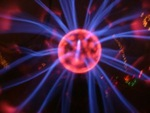 The theme of this edition of snippets is updates!
The theme of this edition of snippets is updates!
• Despite the adult-sounding name, Naked Science is not only family safe, but highly recommended for all members of your family! I'd visited the site before, back when it still looked like this. I'd read through the articles, and it really hadn't been updated for a while, so I stopped going. However, it got a new life in May of 2007, and the current Naked Science site is excellent! The new articles, and the new design, really make this site stand out!
• Regular readers know that I've kept track of online flashcard sites (see my posts here, here, here, here, here, and here). FlashcardDB is the newest online flashcard site I've run across. Besides using the previously discussed Leitner System of spaced repetition, which helps you memorize more difficult information more quickly, there are a wide variety of other features, such as visible graphs to track your progress, and the ability to export your information and progress to other programs, such as spreadsheets.
• Last September, I wrote a post on visualizing scale, and followed it up in November with articles on concreteness and credibility (Both based on the book Made To Stick). All of these articles talked about the importance of making even the biggest and smallest measurements easy for others to understand.
I wish the Sensible Units site existed back then! Sensible Units is a site that takes almost any measurement, and converts it into more real-world units. For example, typing in 100 acres will return .92 Vatican Cities (92% of the size of Vatican City, in other words), while 150 pounds returns 9.4 men's shotputs, 41 average physics textbooks, and 4 CRT computer monitors. It isn't perfect, for example, it doesn't recognize lbs. as meaning pounds, but it is in constant development, and new features are being added regularly,
• I've often written about the usefulness of the binary system in memory, math, and magic. Leo Boudreau's books, and Karl Fulves' Combo and Combo II, make great use of this concept in magic. I've discussed ways of memorizing binary numbers, and pointed to sites like the Howtoons on binary counting and Computer Science Unplugged's binary numbers page to explain the basics.
To those sites, I'd like to add the Bitwise Operations page as an update. This page details what exactly those weird operations like AND, OR, NOT, XOR and bitshifting achieve. To make it easier to understand, you're walked through each idea with the help of a monkey that is walking, running, panting, hungry, thirsty, scared, bored, and/or tired. It sounds strange, but it's a great way to teach and learn about the binary system!
• If you've enjoyed my discussions of people like Martin Gardner, and sites like Numericana and Cut The Knot, where recreational mathematics are a regular topic, you should definitely take a look at Jim Loy's website. Like the previous sites, this is a large site, with much to enjoy and explore. I'll especially recommend the mathematics, gambling, games, and puzzles sections, but you should by no means limit yourself to just those areas.
1
Quick Snippets
Published on Thursday, June 05, 2008 in fun, magic, Martin Gardner, math, memory, memory feats, psychology, snippets
Related Posts
Post Details
Posted by Pi Guy on Jun 5, 2008
Labels:
fun,
magic,
Martin Gardner,
math,
memory,
memory feats,
psychology,
snippets
Subscribe to:
Post Comments (Atom)




1 Response to Quick Snippets
I linked through to
http://www.ludism.org/mentat/BinaryNumbersSystem
and I like the idea a lot of using a letter to represent 4 digits based on some intuitive relationship between the number and the letter. You got me playing around with it!
If memory serves me correct, you have been using letter pairs to memorise two lots of four digits.
The first two are the easiest:
0000 - Zeroes
1111 - Ones
0001 - I
0010 - X
0100 - C
1000 - M (Roman numerals)
This group involves two 1s next to each other:
0011 - Eleven
0110 - Reflection
1100 - Night time
1001 - Second millennium
0101 - Dialling 01 (common in dialling codes)
1010 - Abacus (uses 10s)
0111 - Low
1110 - High
1011 - Ten onwards (10.. 11..)
1101 - Baker's dozen (13)
Mike (the NSci guy)
Post a Comment